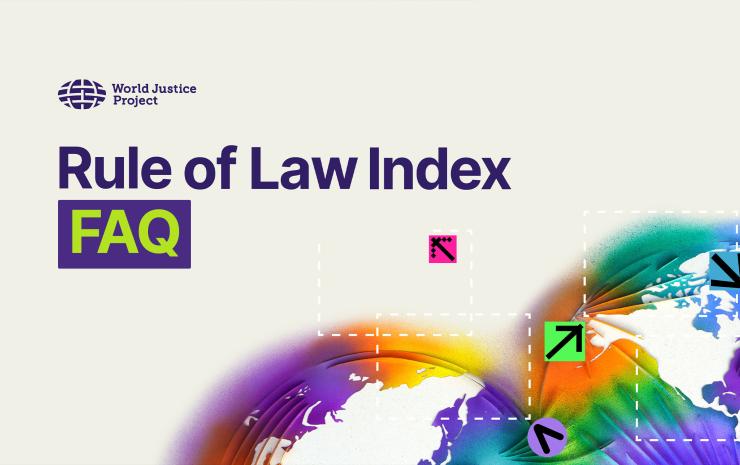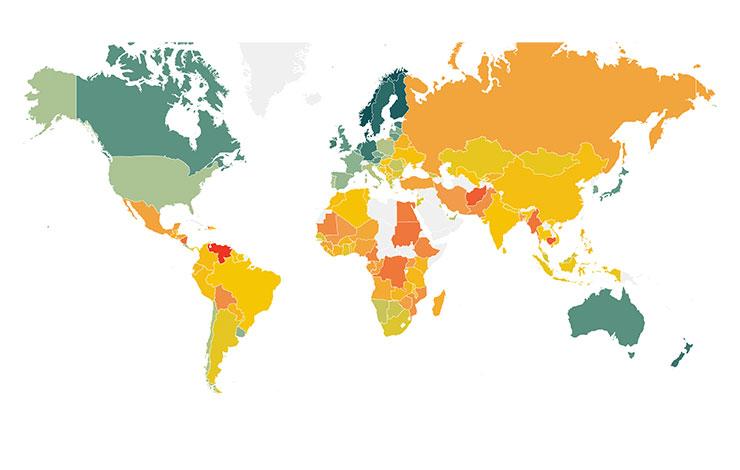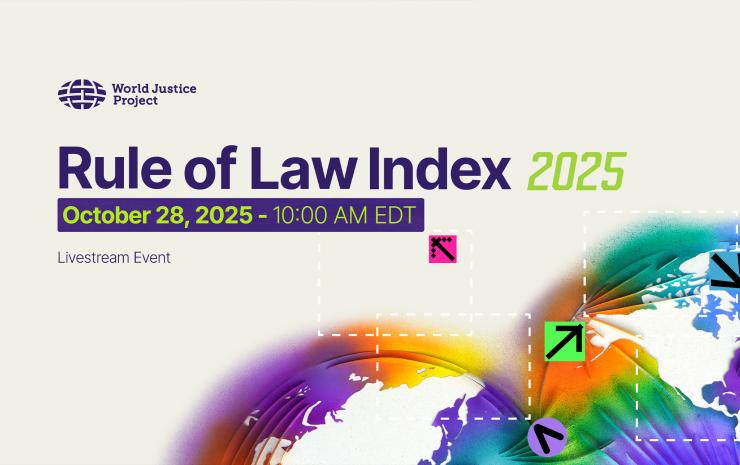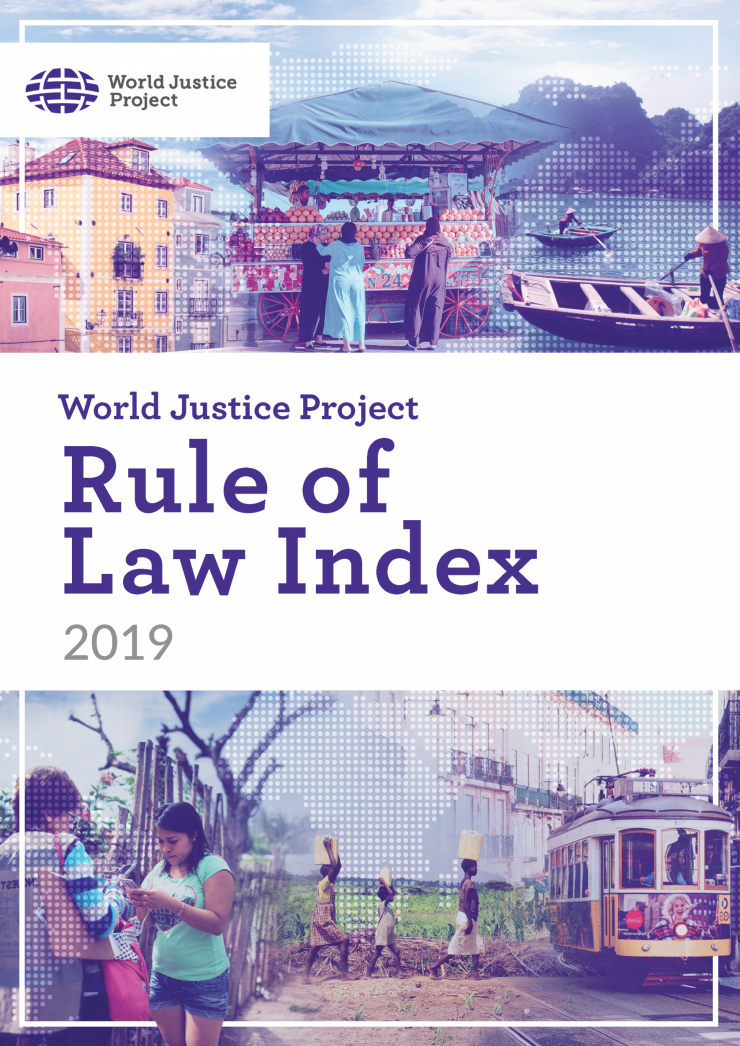
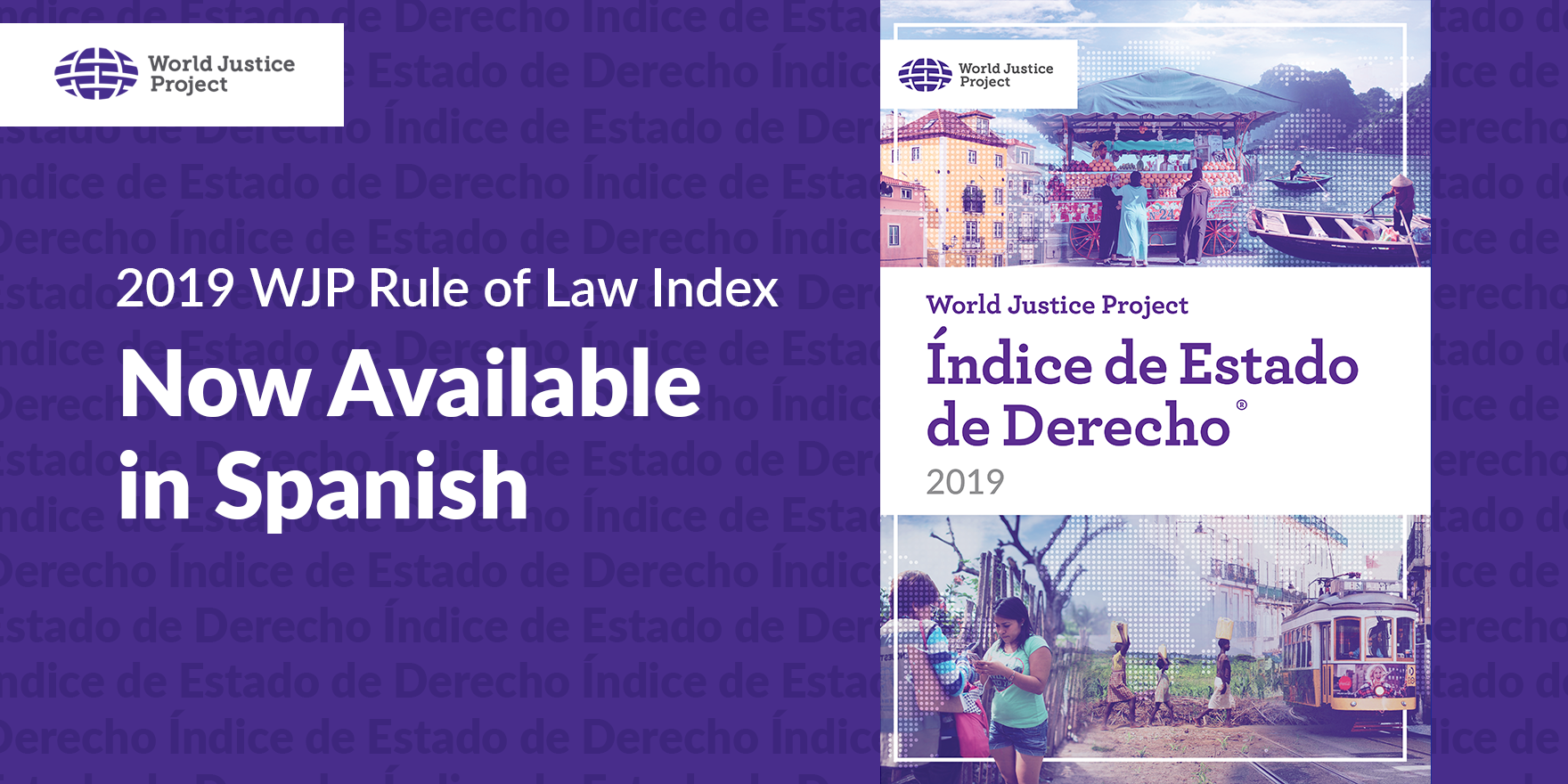
Now available in Spanish, the World Justice Project Rule of Law Index® 2019 measures rule of law adherence in 126 countries and jurisdictions worldwide. Based on more than 120,000 household and 3,800 expert surveys, the Index features primary data measuring countries’ rule of law performance across eight factors: Constraints on Government Powers, Absence of Corruption, Open Government, Fundamental Rights, Order and Security, Regulatory Enforcement, Civil Justice, and Criminal Justice.
Download the Spanish Translation
Report Highlights
The 2019 WJP Rule of Law Index scores show that more countries declined than improved in overall rule of law performance for the second year in a row, continuing a negative slide toward weaker rule of law around the world.
In a sign suggesting rising authoritarianism, the factor score for “Constraints on Government Powers” declined in more countries than any other factor worldwide over the last year (61 countries declined, 23 stayed the same, 29 improved). This factor measures the extent to which, in practice, those who govern are bound by governmental and non-governmental checks such as an independent judiciary, a free press, the ability of legislatures to apply oversight, and more. Over the past four years, Poland, Bosnia and Herzegovina, and Serbia have lost the most ground in this dimension of the rule of law.
The second largest decline over last year was seen in the area of “Criminal Justice,” followed by “Open Government” and “Fundamental Rights." On a positive note, more countries improved in “Absence of Corruption” than declined for the second year in a row.
The top three overall performers in the 2019 WJP Rule of Law Index were Denmark (1), Norway (2), and Finland (3); the bottom three were the Democratic Republic of the Congo (124), Cambodia (125), and Venezuela (126).
Regional Highlights
Countries leading their regions in overall rule of law scores included: Nepal (South Asia), Georgia (Eastern Europe and Central Asia); Namibia (Sub-Saharan Africa); Uruguay (Latin America and the Caribbean); United Arab Emirates (Middle East and North Africa); New Zealand (East Asia and Pacific), and Denmark (Western Europe and North America, defined as EU + EFTA + North America).





